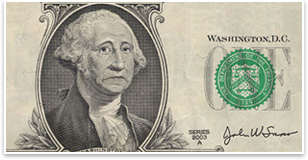
Architecture Firms Struggle with the Economic Outlook for 2008
by Kermit Baker, PhD, Hon. AIA
The national economy clearly has turned more negative in recent months. Inflation has begun to accelerate, fueled by oil prices that are hovering around $100 a barrel. The housing market continues to spiral downward, and recent defaults among homeowners have sparked a broader crisis in credit markets. The employment outlook recently has softened, and the national unemployment spiked up to 5.0 percent in December, after staying below this level for all of 2006 and the first eleven months of 2007. In response, the University of Michigan’s Consumer Sentiment index dropped to 75.5 in December, after beginning the year at 96.9. In the face of an economy with a growing number of liabilities, we have a nonresidential construction industry that is enjoying very healthy conditions. The U.S. Commerce Department reports that spending on nonresidential facilities increased an estimated 18 percent last year. Even with the rising costs of many construction materials and products, as well as increases in construction labor costs, inflation-adjusted spending on nonresidential facilities grew at a double-digit pace, about four times as fast as is estimated for the broader economy.In the face of an economy with a growing number of liabilities, we have a nonresidential construction industry that is enjoying very healthy conditions The AIA’s Architecture Billings Index (ABI), which measures current design activity and therefore future construction activity, indicates that the industry ended the year with a lot of momentum. The overall ABI reading was 55.4 in December (any reading above 50 indicates growth), while the index for commercial and industrial facilities was 62.1, one of the strongest readings in the 12 years that the AIA has been computing this index. Reading the tea leaves Businesses need several quarters or years of healthy business conditions before they invest in new or renovated facilities It’s possible that everyone is right. Construction economists point out that nonresidential construction is a sector that “falls late in the business cycle.” What this means is that when an economic expansion begins, we don’t see a lot of investment in new facilities. Businesses need several quarters or years of healthy business conditions before they invest in new or renovated facilities. Once they reach this point, however, we generally see strong levels of construction even if the economy has begun to weaken. Our current business cycle is an excellent case in point. The current economic expansion began at the end of 2001, after a relatively short and mild national recession. However, government figures indicate that the current nonresidential construction expansion didn’t begin until around the second half of 2005. In 2006 and 2007, when the economy was seeing healthy but slower growth, spending on nonresidential facilities was accelerating. Although nonresidential construction activity generally sees slower growth at the beginning of an economic cycle and stronger growth at the end, it also can turn very quickly Although nonresidential construction activity generally sees slower growth at the beginning of an economic cycle and stronger growth at the end, it also can turn very quickly. Again, our most recent cycle is a good example. The ABI was very strong through the end of 2000. The overall reading was 54.9 in December of 2000, with readings above 50 every month in 1999 and 2000. However, in January of 2001, the ABI dropped 10 points to 44.9, and stayed below 50 for almost every month over the next three years. Other construction industry indicators also turned fairly quickly. When the ABI turned negative in January 2001, the McGraw-Hill Construction measure of contract awards for nonresidential buildings showed a year-over-year decline by the end of the second quarter, and the U.S. Commerce Department’s measure of nonresidential construction activity began its downturn in July of that year. As most architecture firms have learned the hard way, an otherwise seemingly healthy design project can turn sour with almost no notice. If a client runs into some unforeseen problems—financing issues, a tenant backing out of a lease, or even sudden weakness in the market—a firm may be asked to stop work midstream. A recent AIA survey of architecture firms found that on average for about 10 percent of projects by dollar value, design was never completed; in 11 percent, there were major construction delays; and in 10 percent, the projects never were constructed. The message is that current design backlogs can disappear if conditions change, and that design billings don’t guarantee construction activity on a timely basis. Preparing for the unknown
Outlook is a concern, but by no means dire The AIA Consensus Construction Forecast Panel projects a very modest increase in nonresidential construction activity this year, and a very modest decline next year before an expansion begins later in the year The most recent outlook by the AIA Consensus Construction Forecast Panel projects a very modest increase (net of inflation) in nonresidential construction activity this year, and a very modest decline next year before an expansion begins later in the year. Therefore, the consensus is for this cyclical trough to generate almost no decline in real construction activity. If this forecast is even close to accurate, this would be one of the mildest downturns in the nonresidential construction sector in many decades. The downturn earlier this decade saw a decline in excess of 25 percent across the entire sector and about twice that rate for office buildings and hotels. Not only should this cycle be much less severe, but the architecture profession is much more sophisticated now and better able to cope with economic cycles. |
||
Copyright 2008 The American Institute of Architects. All rights reserved. Home Page |
||
news headlines
practice
business
design

 Summary:
Summary: